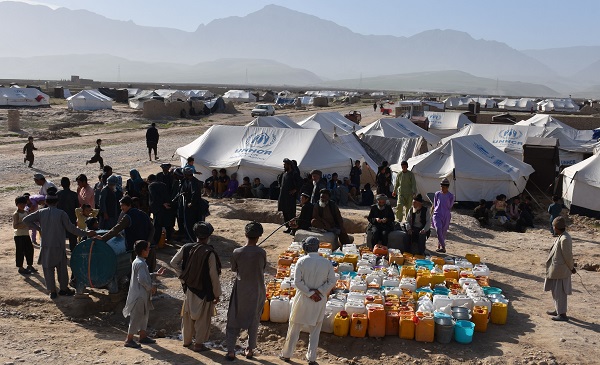
United Nations (New York), (Samajweekly) In an example of the cost of the Afghanistan liquidity crisis, UN humanitarians said that 100 businesses closed in Jalalabad city.
Food shops and other commercial businesses in the city of an estimated 2.2 million people in Nangarhar province, shuttered following currency devaluation and high food and commodity prices, the UN Office for the Coordination of Humanitarian Affairs (OCHA) added on Wednesday.
The World Food Programme (WFP) reports giving food to nearly 1,50,000 people in Badakhshan, Takhar, Kandahar, Helmand and Uruzgan provinces and cash assistance to nearly 6,000 people in Badakhshan, Kabul, Panjshir and Kunduz provinces on Monday, OCHA said.
So far this year, 15 million people received food assistance, with 7 million people assisted in November alone, up from 4 million in September, the office added.
The WFP also pre-positioned food in strategic locations across the northeast and central highlands of Afghanistan, where heavy winter snow can cut off communities from assistance, OCHA said.
The UN Food and Agriculture Organization (FAO) said that as of November 30, it supported 2.23 million people in 2021 across 31 out of Afghanistan’s 34 provinces. In November alone, it assisted more than 800,000 people.
The food agency added it provided wheat seeds across 30 provinces through the winter wheat campaign. At the end of the month and the campaign, FAO will have helped 1.3 million people, enabling farmers to produce enough wheat to cover the cereal needs of 1.7 million people for one year.
Humanitarians warn needs are growing far greater than resources as prices soar, Xinhua news agency reported.
Donors provided nearly $1.5 billion for this year’s two humanitarian appeals for Afghanistan, OCHA said. Included were 762 million or 126 per cent of the 606 million required for the Flash Appeal and 730 million or 84 per cent of the 869 million sought in the Humanitarian Response Plan (HRP).
The office said that the HRP for 2022 seeks three times the funding required this year, $4.4 billion, to reach 22 million people with support.









